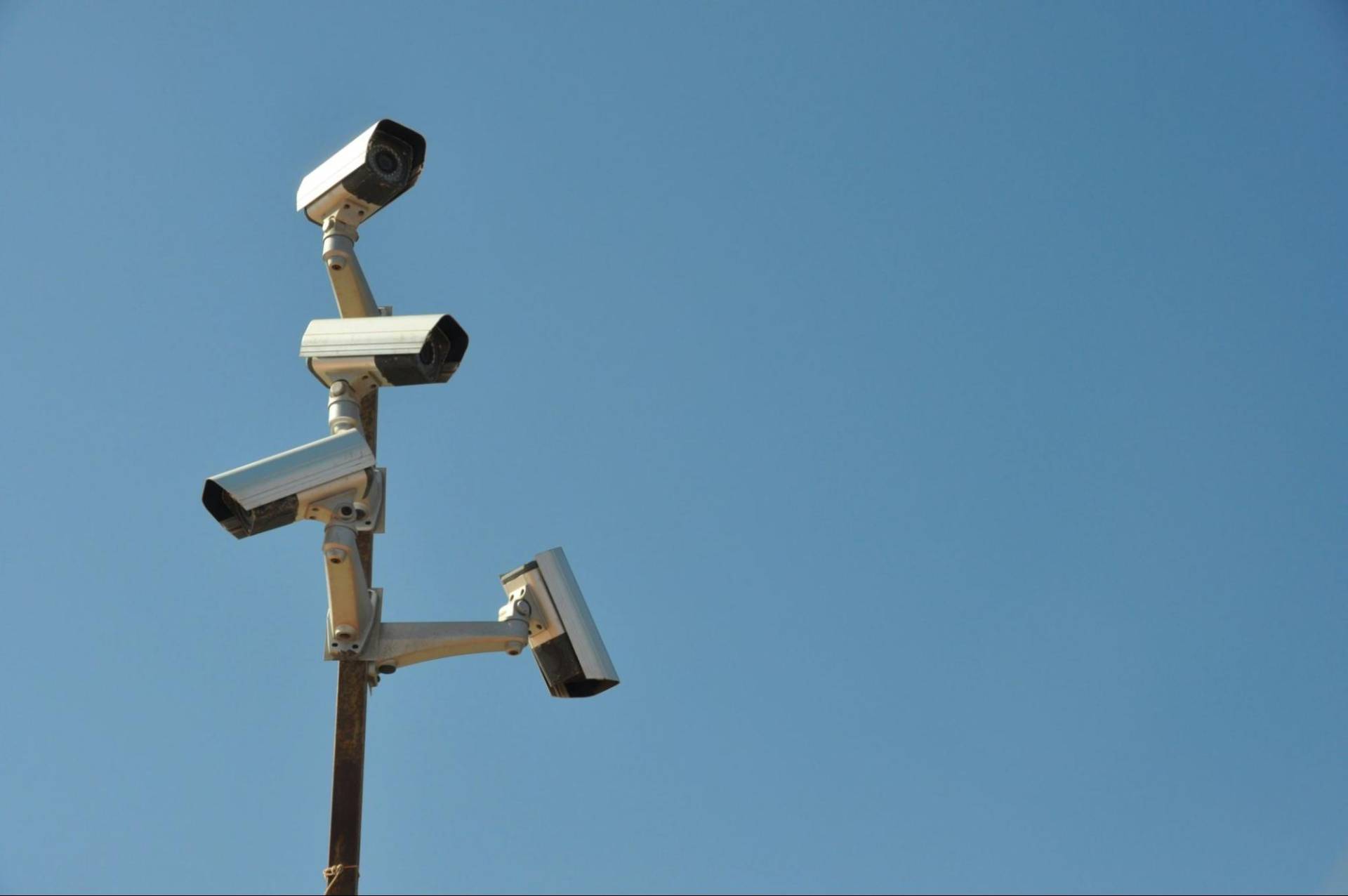 Martyn’s law defines two tiers of compliance: the first, which pertains to premises and events with a capacity of 200-799 people, must put in place appropriate public protection procedures to reduce the risk of harm to individuals in the event of a terror incident.
A more stringent set of regulations have been put in place for so-called ‘enhanced duty premises’, which applies to premises and events with a capacity of more than 800. The enhanced tier will require organisers to put in place measures to reduce their vulnerability to an act of terrorism. This key distinction means that businesses and organisations placed in the advanced tier must enact proactive measures to detect and deter potential terror incidents.
But while Martyn’s Law is the result of a six year campaign spurred by the tragic events that took place at the Manchester Arena in 2017, businesspeople today must understand that any premises where it is reasonable to expect more than 200 individuals to be present must comply with the Act.
This means that shopping centres, retail stores, restaurants, and bars, along with a swathe of other small- and medium-sized businesses, are set to be impacted when the Law comes into force in 2027.
Enforcement of the Law will be overseen by the Security Industry Authority, the organisation currently responsible for regulating the private security industry across the UK. Non-compliance with the Act can be punished with penalties up to £18 million or 5% of worldwide revenue, whichever is higher. Certain breaches of the Law will even be considered criminal offenses.
But Martyn’s Law is premised on the legal concept of ‘reasonably practicable’ which, although providing vital flexibility to tailor compliance with the unique needs of a premises or event, has left many businesses owners in the dark over how best to approach the Act’s provisions.
But there are a few simple steps which can help business owners of all sizes ensure they are compliant.
The first is to consider how to respond in the event of a terror incident. Protect UK provide a useful crisis response kits checklist which details the documents and equipment all businesses should have to hand in the event of a crisis requiring emergency evacuation, invacuation or lockdown procedures.
For more comprehensive recommendations, the UK’s National Counter Terrorism Security Office have prepared Crowded Places Guidance outlining best practices is managing risk, identifying suspicious items and personnel security training, among other areas. Importantly, the document also provides tailored advice across a range of sectors including retail stores, major events and commercial centres.
But for any premises or events meeting the Act’s minimum standard of 200 individuals, investing in video surveillance and advanced video surveillance will most likely be a part of the solution.
Artificial Intelligence of Things (AIoT) video surveillance systems use provide a range automated capabilities to enhance real-time threat detection, including objection, loitering detection and intrusion detection.
Dahua Technology’s WizMind Series, for example, provides AI-powered 4K cameras which can analyse gestures, movements and body actions to provide real-time updates on suspicious activity. Dahua’s TiOC and WizColour range of cameras also provide enhanced low-light solutions to provide high resolution colour images in poorly-lit scenarios.
There are equally a range of more boutique products on the market. ZeroEyes, set up in 2018 by a team of Navy SEALs, analyses over 36,000 images per second from client video feeds to identity people suspected of carrying firearms. When integrated with more comprehensive video surveillance systems, programmes link ZeroEyes can provide vital additional capabilities for premises and events at high risk of attack.
Although Martyn’s Law is an important step in advancing the UK’s counter-terrorism legislation, it is understandable that many business owners are concerned over the cost and complexity of compliance.
But as outlined in this article, a range of resources and products are already on the market at affordable prices to provide best-in-class counter-threat solutions.
Martyn’s law defines two tiers of compliance: the first, which pertains to premises and events with a capacity of 200-799 people, must put in place appropriate public protection procedures to reduce the risk of harm to individuals in the event of a terror incident.
A more stringent set of regulations have been put in place for so-called ‘enhanced duty premises’, which applies to premises and events with a capacity of more than 800. The enhanced tier will require organisers to put in place measures to reduce their vulnerability to an act of terrorism. This key distinction means that businesses and organisations placed in the advanced tier must enact proactive measures to detect and deter potential terror incidents.
But while Martyn’s Law is the result of a six year campaign spurred by the tragic events that took place at the Manchester Arena in 2017, businesspeople today must understand that any premises where it is reasonable to expect more than 200 individuals to be present must comply with the Act.
This means that shopping centres, retail stores, restaurants, and bars, along with a swathe of other small- and medium-sized businesses, are set to be impacted when the Law comes into force in 2027.
Enforcement of the Law will be overseen by the Security Industry Authority, the organisation currently responsible for regulating the private security industry across the UK. Non-compliance with the Act can be punished with penalties up to £18 million or 5% of worldwide revenue, whichever is higher. Certain breaches of the Law will even be considered criminal offenses.
But Martyn’s Law is premised on the legal concept of ‘reasonably practicable’ which, although providing vital flexibility to tailor compliance with the unique needs of a premises or event, has left many businesses owners in the dark over how best to approach the Act’s provisions.
But there are a few simple steps which can help business owners of all sizes ensure they are compliant.
The first is to consider how to respond in the event of a terror incident. Protect UK provide a useful crisis response kits checklist which details the documents and equipment all businesses should have to hand in the event of a crisis requiring emergency evacuation, invacuation or lockdown procedures.
For more comprehensive recommendations, the UK’s National Counter Terrorism Security Office have prepared Crowded Places Guidance outlining best practices is managing risk, identifying suspicious items and personnel security training, among other areas. Importantly, the document also provides tailored advice across a range of sectors including retail stores, major events and commercial centres.
But for any premises or events meeting the Act’s minimum standard of 200 individuals, investing in video surveillance and advanced video surveillance will most likely be a part of the solution.
Artificial Intelligence of Things (AIoT) video surveillance systems use provide a range automated capabilities to enhance real-time threat detection, including objection, loitering detection and intrusion detection.
Dahua Technology’s WizMind Series, for example, provides AI-powered 4K cameras which can analyse gestures, movements and body actions to provide real-time updates on suspicious activity. Dahua’s TiOC and WizColour range of cameras also provide enhanced low-light solutions to provide high resolution colour images in poorly-lit scenarios.
There are equally a range of more boutique products on the market. ZeroEyes, set up in 2018 by a team of Navy SEALs, analyses over 36,000 images per second from client video feeds to identity people suspected of carrying firearms. When integrated with more comprehensive video surveillance systems, programmes link ZeroEyes can provide vital additional capabilities for premises and events at high risk of attack.
Although Martyn’s Law is an important step in advancing the UK’s counter-terrorism legislation, it is understandable that many business owners are concerned over the cost and complexity of compliance.
But as outlined in this article, a range of resources and products are already on the market at affordable prices to provide best-in-class counter-threat solutions.
Martyn’s Law: a practical guide to compliance with the UK’s landmark new security legislation
by / ⠀News / July 22, 2025
The UK’s new Terrorism (Protection of Premises) Act 2025 which came into effect on 3rd April 2025 was a landmark moment in British counter-terrorism legislation.
For the first time, qualifying British premises and events will have to consider the risks of a terror attack and take measures to reduce them.
Known as ‘Martyn’s Law’, the Act is the result of six years’ campaigning led by Figen Murray, mother of Martyn Hett, who lost his life at the Manchester Arena bombing in May 2017.
 Martyn’s law defines two tiers of compliance: the first, which pertains to premises and events with a capacity of 200-799 people, must put in place appropriate public protection procedures to reduce the risk of harm to individuals in the event of a terror incident.
A more stringent set of regulations have been put in place for so-called ‘enhanced duty premises’, which applies to premises and events with a capacity of more than 800. The enhanced tier will require organisers to put in place measures to reduce their vulnerability to an act of terrorism. This key distinction means that businesses and organisations placed in the advanced tier must enact proactive measures to detect and deter potential terror incidents.
But while Martyn’s Law is the result of a six year campaign spurred by the tragic events that took place at the Manchester Arena in 2017, businesspeople today must understand that any premises where it is reasonable to expect more than 200 individuals to be present must comply with the Act.
This means that shopping centres, retail stores, restaurants, and bars, along with a swathe of other small- and medium-sized businesses, are set to be impacted when the Law comes into force in 2027.
Enforcement of the Law will be overseen by the Security Industry Authority, the organisation currently responsible for regulating the private security industry across the UK. Non-compliance with the Act can be punished with penalties up to £18 million or 5% of worldwide revenue, whichever is higher. Certain breaches of the Law will even be considered criminal offenses.
But Martyn’s Law is premised on the legal concept of ‘reasonably practicable’ which, although providing vital flexibility to tailor compliance with the unique needs of a premises or event, has left many businesses owners in the dark over how best to approach the Act’s provisions.
But there are a few simple steps which can help business owners of all sizes ensure they are compliant.
The first is to consider how to respond in the event of a terror incident. Protect UK provide a useful crisis response kits checklist which details the documents and equipment all businesses should have to hand in the event of a crisis requiring emergency evacuation, invacuation or lockdown procedures.
For more comprehensive recommendations, the UK’s National Counter Terrorism Security Office have prepared Crowded Places Guidance outlining best practices is managing risk, identifying suspicious items and personnel security training, among other areas. Importantly, the document also provides tailored advice across a range of sectors including retail stores, major events and commercial centres.
But for any premises or events meeting the Act’s minimum standard of 200 individuals, investing in video surveillance and advanced video surveillance will most likely be a part of the solution.
Artificial Intelligence of Things (AIoT) video surveillance systems use provide a range automated capabilities to enhance real-time threat detection, including objection, loitering detection and intrusion detection.
Dahua Technology’s WizMind Series, for example, provides AI-powered 4K cameras which can analyse gestures, movements and body actions to provide real-time updates on suspicious activity. Dahua’s TiOC and WizColour range of cameras also provide enhanced low-light solutions to provide high resolution colour images in poorly-lit scenarios.
There are equally a range of more boutique products on the market. ZeroEyes, set up in 2018 by a team of Navy SEALs, analyses over 36,000 images per second from client video feeds to identity people suspected of carrying firearms. When integrated with more comprehensive video surveillance systems, programmes link ZeroEyes can provide vital additional capabilities for premises and events at high risk of attack.
Although Martyn’s Law is an important step in advancing the UK’s counter-terrorism legislation, it is understandable that many business owners are concerned over the cost and complexity of compliance.
But as outlined in this article, a range of resources and products are already on the market at affordable prices to provide best-in-class counter-threat solutions.
Martyn’s law defines two tiers of compliance: the first, which pertains to premises and events with a capacity of 200-799 people, must put in place appropriate public protection procedures to reduce the risk of harm to individuals in the event of a terror incident.
A more stringent set of regulations have been put in place for so-called ‘enhanced duty premises’, which applies to premises and events with a capacity of more than 800. The enhanced tier will require organisers to put in place measures to reduce their vulnerability to an act of terrorism. This key distinction means that businesses and organisations placed in the advanced tier must enact proactive measures to detect and deter potential terror incidents.
But while Martyn’s Law is the result of a six year campaign spurred by the tragic events that took place at the Manchester Arena in 2017, businesspeople today must understand that any premises where it is reasonable to expect more than 200 individuals to be present must comply with the Act.
This means that shopping centres, retail stores, restaurants, and bars, along with a swathe of other small- and medium-sized businesses, are set to be impacted when the Law comes into force in 2027.
Enforcement of the Law will be overseen by the Security Industry Authority, the organisation currently responsible for regulating the private security industry across the UK. Non-compliance with the Act can be punished with penalties up to £18 million or 5% of worldwide revenue, whichever is higher. Certain breaches of the Law will even be considered criminal offenses.
But Martyn’s Law is premised on the legal concept of ‘reasonably practicable’ which, although providing vital flexibility to tailor compliance with the unique needs of a premises or event, has left many businesses owners in the dark over how best to approach the Act’s provisions.
But there are a few simple steps which can help business owners of all sizes ensure they are compliant.
The first is to consider how to respond in the event of a terror incident. Protect UK provide a useful crisis response kits checklist which details the documents and equipment all businesses should have to hand in the event of a crisis requiring emergency evacuation, invacuation or lockdown procedures.
For more comprehensive recommendations, the UK’s National Counter Terrorism Security Office have prepared Crowded Places Guidance outlining best practices is managing risk, identifying suspicious items and personnel security training, among other areas. Importantly, the document also provides tailored advice across a range of sectors including retail stores, major events and commercial centres.
But for any premises or events meeting the Act’s minimum standard of 200 individuals, investing in video surveillance and advanced video surveillance will most likely be a part of the solution.
Artificial Intelligence of Things (AIoT) video surveillance systems use provide a range automated capabilities to enhance real-time threat detection, including objection, loitering detection and intrusion detection.
Dahua Technology’s WizMind Series, for example, provides AI-powered 4K cameras which can analyse gestures, movements and body actions to provide real-time updates on suspicious activity. Dahua’s TiOC and WizColour range of cameras also provide enhanced low-light solutions to provide high resolution colour images in poorly-lit scenarios.
There are equally a range of more boutique products on the market. ZeroEyes, set up in 2018 by a team of Navy SEALs, analyses over 36,000 images per second from client video feeds to identity people suspected of carrying firearms. When integrated with more comprehensive video surveillance systems, programmes link ZeroEyes can provide vital additional capabilities for premises and events at high risk of attack.
Although Martyn’s Law is an important step in advancing the UK’s counter-terrorism legislation, it is understandable that many business owners are concerned over the cost and complexity of compliance.
But as outlined in this article, a range of resources and products are already on the market at affordable prices to provide best-in-class counter-threat solutions.
 Martyn’s law defines two tiers of compliance: the first, which pertains to premises and events with a capacity of 200-799 people, must put in place appropriate public protection procedures to reduce the risk of harm to individuals in the event of a terror incident.
A more stringent set of regulations have been put in place for so-called ‘enhanced duty premises’, which applies to premises and events with a capacity of more than 800. The enhanced tier will require organisers to put in place measures to reduce their vulnerability to an act of terrorism. This key distinction means that businesses and organisations placed in the advanced tier must enact proactive measures to detect and deter potential terror incidents.
But while Martyn’s Law is the result of a six year campaign spurred by the tragic events that took place at the Manchester Arena in 2017, businesspeople today must understand that any premises where it is reasonable to expect more than 200 individuals to be present must comply with the Act.
This means that shopping centres, retail stores, restaurants, and bars, along with a swathe of other small- and medium-sized businesses, are set to be impacted when the Law comes into force in 2027.
Enforcement of the Law will be overseen by the Security Industry Authority, the organisation currently responsible for regulating the private security industry across the UK. Non-compliance with the Act can be punished with penalties up to £18 million or 5% of worldwide revenue, whichever is higher. Certain breaches of the Law will even be considered criminal offenses.
But Martyn’s Law is premised on the legal concept of ‘reasonably practicable’ which, although providing vital flexibility to tailor compliance with the unique needs of a premises or event, has left many businesses owners in the dark over how best to approach the Act’s provisions.
But there are a few simple steps which can help business owners of all sizes ensure they are compliant.
The first is to consider how to respond in the event of a terror incident. Protect UK provide a useful crisis response kits checklist which details the documents and equipment all businesses should have to hand in the event of a crisis requiring emergency evacuation, invacuation or lockdown procedures.
For more comprehensive recommendations, the UK’s National Counter Terrorism Security Office have prepared Crowded Places Guidance outlining best practices is managing risk, identifying suspicious items and personnel security training, among other areas. Importantly, the document also provides tailored advice across a range of sectors including retail stores, major events and commercial centres.
But for any premises or events meeting the Act’s minimum standard of 200 individuals, investing in video surveillance and advanced video surveillance will most likely be a part of the solution.
Artificial Intelligence of Things (AIoT) video surveillance systems use provide a range automated capabilities to enhance real-time threat detection, including objection, loitering detection and intrusion detection.
Dahua Technology’s WizMind Series, for example, provides AI-powered 4K cameras which can analyse gestures, movements and body actions to provide real-time updates on suspicious activity. Dahua’s TiOC and WizColour range of cameras also provide enhanced low-light solutions to provide high resolution colour images in poorly-lit scenarios.
There are equally a range of more boutique products on the market. ZeroEyes, set up in 2018 by a team of Navy SEALs, analyses over 36,000 images per second from client video feeds to identity people suspected of carrying firearms. When integrated with more comprehensive video surveillance systems, programmes link ZeroEyes can provide vital additional capabilities for premises and events at high risk of attack.
Although Martyn’s Law is an important step in advancing the UK’s counter-terrorism legislation, it is understandable that many business owners are concerned over the cost and complexity of compliance.
But as outlined in this article, a range of resources and products are already on the market at affordable prices to provide best-in-class counter-threat solutions.
Martyn’s law defines two tiers of compliance: the first, which pertains to premises and events with a capacity of 200-799 people, must put in place appropriate public protection procedures to reduce the risk of harm to individuals in the event of a terror incident.
A more stringent set of regulations have been put in place for so-called ‘enhanced duty premises’, which applies to premises and events with a capacity of more than 800. The enhanced tier will require organisers to put in place measures to reduce their vulnerability to an act of terrorism. This key distinction means that businesses and organisations placed in the advanced tier must enact proactive measures to detect and deter potential terror incidents.
But while Martyn’s Law is the result of a six year campaign spurred by the tragic events that took place at the Manchester Arena in 2017, businesspeople today must understand that any premises where it is reasonable to expect more than 200 individuals to be present must comply with the Act.
This means that shopping centres, retail stores, restaurants, and bars, along with a swathe of other small- and medium-sized businesses, are set to be impacted when the Law comes into force in 2027.
Enforcement of the Law will be overseen by the Security Industry Authority, the organisation currently responsible for regulating the private security industry across the UK. Non-compliance with the Act can be punished with penalties up to £18 million or 5% of worldwide revenue, whichever is higher. Certain breaches of the Law will even be considered criminal offenses.
But Martyn’s Law is premised on the legal concept of ‘reasonably practicable’ which, although providing vital flexibility to tailor compliance with the unique needs of a premises or event, has left many businesses owners in the dark over how best to approach the Act’s provisions.
But there are a few simple steps which can help business owners of all sizes ensure they are compliant.
The first is to consider how to respond in the event of a terror incident. Protect UK provide a useful crisis response kits checklist which details the documents and equipment all businesses should have to hand in the event of a crisis requiring emergency evacuation, invacuation or lockdown procedures.
For more comprehensive recommendations, the UK’s National Counter Terrorism Security Office have prepared Crowded Places Guidance outlining best practices is managing risk, identifying suspicious items and personnel security training, among other areas. Importantly, the document also provides tailored advice across a range of sectors including retail stores, major events and commercial centres.
But for any premises or events meeting the Act’s minimum standard of 200 individuals, investing in video surveillance and advanced video surveillance will most likely be a part of the solution.
Artificial Intelligence of Things (AIoT) video surveillance systems use provide a range automated capabilities to enhance real-time threat detection, including objection, loitering detection and intrusion detection.
Dahua Technology’s WizMind Series, for example, provides AI-powered 4K cameras which can analyse gestures, movements and body actions to provide real-time updates on suspicious activity. Dahua’s TiOC and WizColour range of cameras also provide enhanced low-light solutions to provide high resolution colour images in poorly-lit scenarios.
There are equally a range of more boutique products on the market. ZeroEyes, set up in 2018 by a team of Navy SEALs, analyses over 36,000 images per second from client video feeds to identity people suspected of carrying firearms. When integrated with more comprehensive video surveillance systems, programmes link ZeroEyes can provide vital additional capabilities for premises and events at high risk of attack.
Although Martyn’s Law is an important step in advancing the UK’s counter-terrorism legislation, it is understandable that many business owners are concerned over the cost and complexity of compliance.
But as outlined in this article, a range of resources and products are already on the market at affordable prices to provide best-in-class counter-threat solutions.






